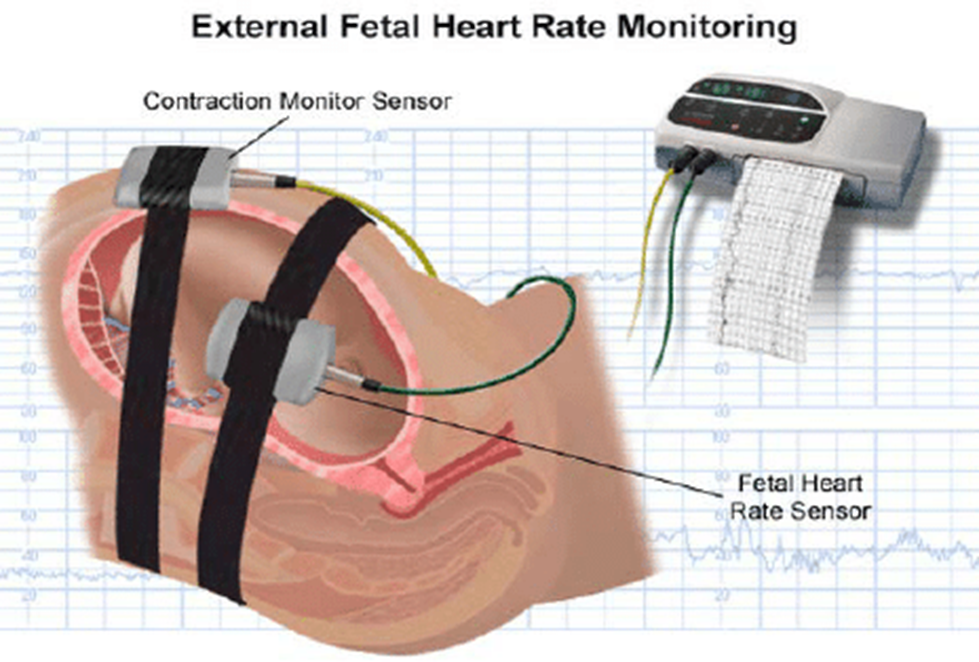A nurse is reinforcing teaching about fetal development with a group of women who are pregnant. Which of the following statements should the nurse include in the teaching?
You will start to feel the baby move at 24 weeks
Sex of the baby is determined by week 8
The baby’s heartbeat is audible by a Doppler stethoscope at 12 weeks
Very fine hairs called lanugo cover your baby’s entire body by 36 weeks
The Correct Answer is C
Choice A:
It is incorrect to state that all women will start to feel the baby move at 24 weeks. While this is a common timeframe, the exact timing of when a woman first feels fetal movements, known as quickening, can vary. Some women may feel movement as early as 16 weeks, while others may not feel it until closer to 25 weeks. Factors such as the position of the placenta, the woman's body size, and whether it is her first pregnancy can influence when she first perceives movement.
Choice B:
While the baby's sex is genetically determined at conception, it is not typically visible on ultrasound until around 18-20 weeks of gestation. This is due to the development of the external genitalia, which occurs between 11 and 14 weeks. It is not accurate to state that the sex is always definitively determined by week 8.
Choice D:
Lanugo, the fine hair that covers a fetus's body, is typically present between 14 and 20 weeks of gestation. It starts to disappear around 32-36 weeks, and most babies are born without it. Therefore, it is incorrect to say that lanugo covers the entire body at 36 weeks.
Choice C:
The fetal heartbeat can be detected by a Doppler stethoscope as early as 10-12 weeks of gestation. This is often a reassuring milestone for pregnant women, as it provides audible confirmation of the baby's presence and well-being. It is a common practice for healthcare providers to use a Doppler stethoscope during prenatal visits to assess the fetal heart rate and monitor fetal development.
Nursing Test Bank
Naxlex Comprehensive Predictor Exams
Related Questions
Correct Answer is D
Explanation
Rationale for Choice A:
An IV is not routinely initiated prior to a non-stress test. It may be started if a biophysical profile (BPP), which includes an ultrasound, is also being performed, or if there is a risk of complications that may necessitate immediate intervention. However, it is not a standard part of the non-stress test itself.
Rationale for Choice B:
Nipple stimulation is not a standard component of a non-stress test. It may be used in some cases to try to induce fetal movement if the fetus is not moving actively enough during the test. However, it is not a routine part of the procedure.
Rationale for Choice C:
An ultrasound is not typically performed prior to a non-stress test. It may be done as part of a BPP, but it is not necessary for the non-stress test itself.
Rationale for Choice D:
An external fetal monitor is essential for conducting a non-stress test. This monitor uses two belts that are placed around the mother's abdomen. One belt measures the fetal heart rate, and the other belt measures uterine contractions. The monitor records the fetal heart rate and any contractions for a period of 20 to 40 minutes. The test is considered reactive (normal) if the fetal heart rate increases by at least 15 beats per minute for at least 15 seconds twice during the test. This acceleration in heart rate is typically in response to fetal movement.

Correct Answer is A
Explanation
Choice A:
Fetal heart tone location: In a frank breech presentation, the fetal buttocks are positioned downward and the legs are extended straight up toward the head, placing the fetal heart closer to the mother's upper abdomen. This results in fetal heart tones being heard above the umbilicus at midline.
Gestation period: At 9 weeks of gestation, the fetus is still small and has ample room to move within the uterus, making breech presentations more common. However, it's important to note that the ideal position for childbirth is cephalic, with the head down.
Other presentations:
Cephalic presentations typically have fetal heart tones below the umbilicus.
Transverse presentations usually have fetal heart tones laterally, off to one side of the abdomen.
Posterior presentations, while still head down, can have fetal heart tones that are difficult to locate or muffled due to the position of the fetal back against the mother's spine.
Choice B:
Fetal position: In a transverse presentation, the fetus is positioned horizontally across the uterus, with the head and buttocks on either side. This typically results in fetal heart tones being heard laterally, rather than above the umbilicus at midline.
Choice C:
Fetal position: In a cephalic presentation, the fetus is head down, with the buttocks near the fundus of the uterus. This usually results in fetal heart tones being heard below the umbilicus, rather than above it.
Choice D:
Fetal position: In a posterior presentation, the fetus is head down, but facing the mother's back. While this can sometimes make fetal heart tones difficult to locate, they are typically still heard below the umbilicus, rather than above it.
Whether you are a student looking to ace your exams or a practicing nurse seeking to enhance your expertise , our nursing education contents will empower you with the confidence and competence to make a difference in the lives of patients and become a respected leader in the healthcare field.
Visit Naxlex, invest in your future and unlock endless possibilities with our unparalleled nursing education contents today
Report Wrong Answer on the Current Question
Do you disagree with the answer? If yes, what is your expected answer? Explain.
Kindly be descriptive with the issue you are facing.
